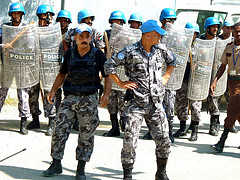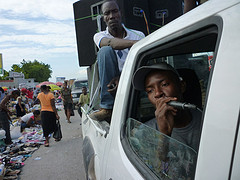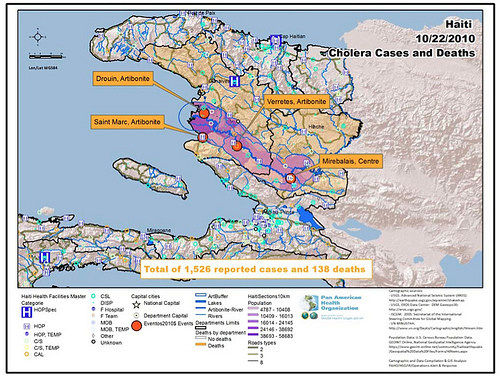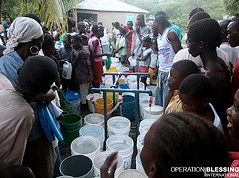 Mac McClelland of Mother Jones magazine, in a follow-up to a previous post, publishes my account of an Oct. 15 protest against the UN peacekeeping mission.
Mac McClelland of Mother Jones magazine, in a follow-up to a previous post, publishes my account of an Oct. 15 protest against the UN peacekeeping mission.
One of the MINUSTAH fired a warning shot in the air and people panicked, ran away, yelling “Film! Film them!” The one in the photo pointed his loaded gun, finger on the trigger, at a lot of people, sweeping his arm in a big motion. Then the Haitians started chanting, “They’re shooting on us, they’re shooting on us.”
I feared for all our lives in those moments, but was intensely aware of the need to document what was happening. As it unfolded my mind went straight to the man killed by troops at Father Gerard Jean-Juste‘s funeral in 2009. In that instance, UN troops leveled their weapons at unarmed people—and fired. MINUSTAH denied it later, even though a Haitian TV crew had grainy footage of the whole incident.
Later on last Friday, a MINUSTAH truck nervously forced its way through the crowd and a bunch of journalists were pushed into a ditch. Sebastian Walker from Al Jazeera English was one of them, ending up with a little bloody scratch on his head. At another point, one of the MINUSTAH base security guys covered my camera with his hand as I filmed him in the street. I was shoved several times by them too.
Makes you wonder how ordinary Haitians are treated, day in and day out, in places where there are no cameras.
I never saw the protesters be anything other than peaceful, until, long after MINUSTAH had upped the tension by pulling their guns out, someone chucked a single bottle at them from across the street. I’m told the UN is carrying out an internal investigation into their actions, as always.
You should know too that MINUSTAH troops have been accused of murdering a young boy in Cap-Haitien, Haiti’s second largest city, in August.









 Finally
Finally 

 grandmother sent me a short but sweet e-mail this morning, asking if I’m doing okay here in Haiti, where I work as a freelance journalist. She said the country has popped up in the news again because Wyclef Jean, a Haitian-born musician, is running for president.
grandmother sent me a short but sweet e-mail this morning, asking if I’m doing okay here in Haiti, where I work as a freelance journalist. She said the country has popped up in the news again because Wyclef Jean, a Haitian-born musician, is running for president. 